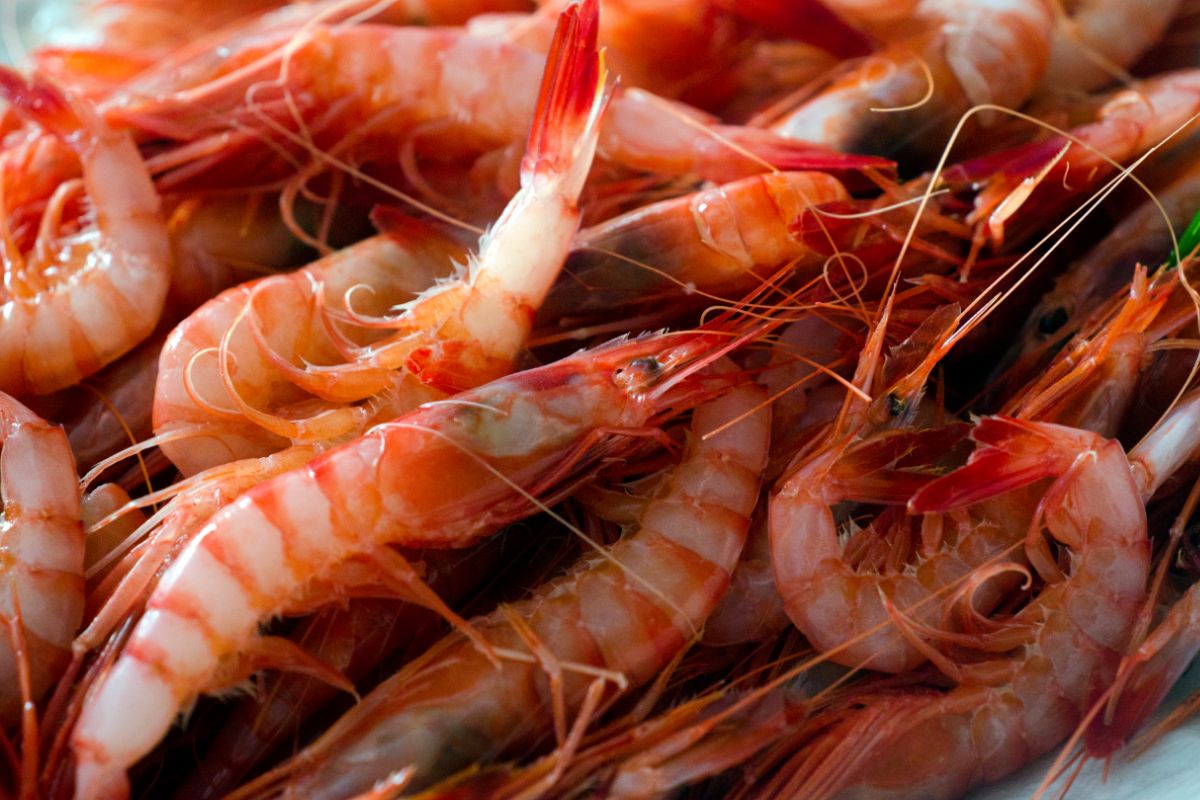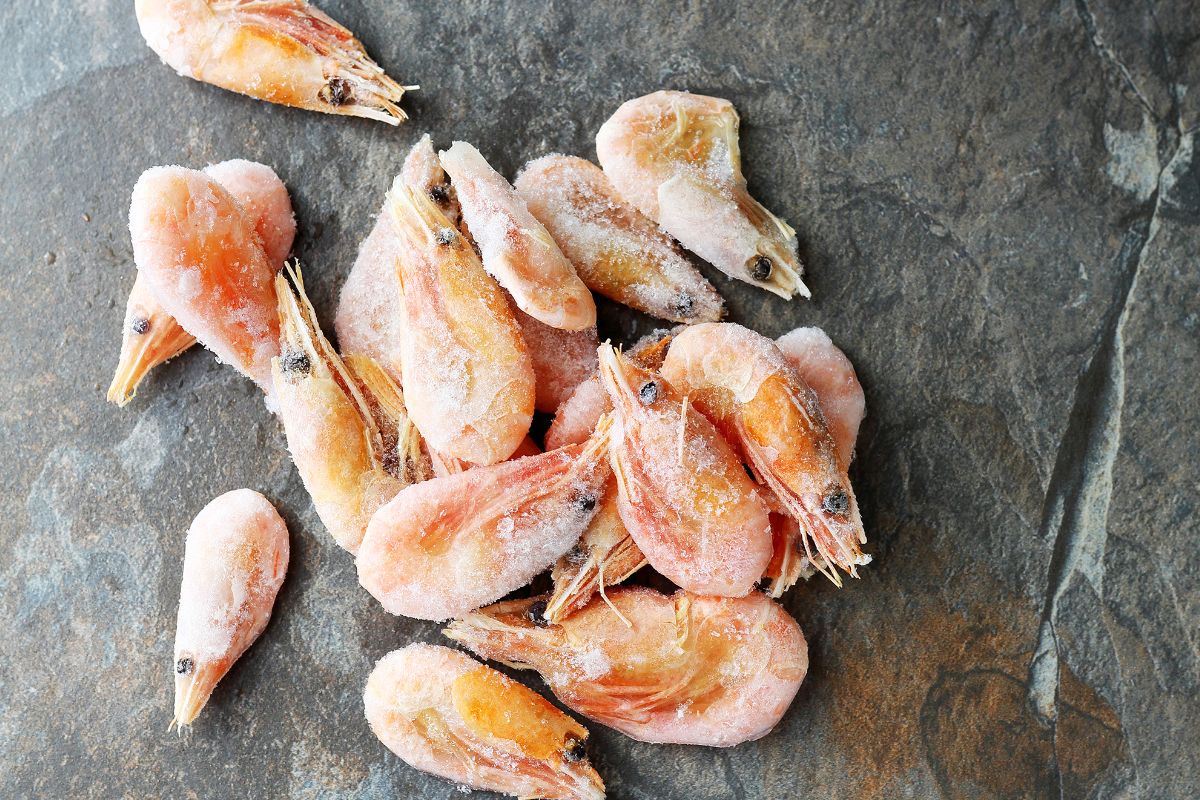You can never be too careful while handling food, especially when you are working with fresh meat or fish. You may think that it is safe to freeze your food to preserve it longer, but how many times can you freeze leftovers?

Moreover, how many times can you safely freeze some shrimp? In this guide, we will take you through all the steps and requirements you will need to meet in the kitchen before attempting to refreeze some shrimp.
Follow our advice, and avoid food poisoning altogether! So, let’s get started. Here are the answers to all the questions that you will have concerning refreezing previously thawed shrimp.
Is It Safe To Refreeze Shrimp After It Has Been Defrosted?
As stated by the USDA, once fresh shrimp has defrosted in the refrigerator, it may be safely refrozen for around 1 to 2 days. The raw shrimp must then be cooked immediately and shouldn’t be frozen after being thawed in the microwave or by soaking it in water (for more information on cooking shrimp, read here).
The temperature of the meal climbs over 40 F while defrosting using a microwave or water, which puts it in a position for dangerous bacteria to spread quickly in the product. This is the cause for the discrepancy. Hence, these shrimp may become rancid even after being frozen.
Shrimp must be prepared before being frozen in so that you can effectively refreeze them after they have thawed in the microwave or water. Bacteria are eliminated during cooking, making the shrimp then suitable for freezing.
How To Safely Thaw Shrimp?
Food is defrosted by taking the item from the freezer and allowing it to reheat up gradually so that it won’t be harmed by extreme fluctuations in temperature. Depending on the item being defrosted, the procedure may require somewhere around 2 hours to 24 hours.
Your food can be defrosted in one of three basic ways: the fridge, an ice bath, or a microwave. The quickest method is to thaw the shrimp in the microwave, which should take a couple of minutes, whereas the other two methods may take up to 24 hours.
However, if time is dispensable for you, we recommend either using an ice bath or allowing your shrimp to fully defrost in the fridge. As it slowly thaws, the texture and flavor will remain almost the same, whereas microwaving the food will decrease the quality noticeably.
Can You Refreeze Shrimp More Than Once?
Shrimp must not be refrozen more than once, particularly when they have been thawed or removed from the freezer for an extended period of time, as is the case with the majority of other types of meat and seafood.
Refreezing shrimp will contaminate them, since rising temperatures promote the growth of bacteria throughout the meat. Shrimp is more susceptible to spoiling while being frozen the more times it is refrozen.
Eating spoiled shrimp can have a variety of harmful consequences on the body and should be avoided at all costs. This will be covered in more detail in a later section of this article.
How Long Can Refrozen Shrimp Be Safely Frozen For?

Shrimp that has been thawed inside the refrigerator can be safely refrozen for up to 2 days, according to the USDA. You should not, however, keep shrimp from becoming thawed by using an oven, water, or any water at all if you plan on refreezing it a second time.
Under these circumstances, you must cook and consume the shrimp quickly, and not risk refreezing and consuming at a later date. Hence, if the shrimp were defrosted in a refrigerator, you could refreeze the shrimp that had previously defrosted for a short while.
But, keeping it in the freezer for more than 48 hours is not advised. It is very likely that the shrimp will spoil once this period has passed.
How To Check If Refrozen Shrimp Has Gone Off?
If you’ve previously frozen shrimp and are concerned that it went bad while being in the freezer, you might be asking how you can tell if they’re still edible or not. Looking for abnormalities in their structure is the best technique to determine if the refrozen shrimps have degraded.
When defrosted, expired shrimp frequently have an unpleasant smell, are slippery, and also will have lost their color. You should never consume the shrimp or serve them to anybody else if you observe any of these changes.
What To Do If You Have Consumed Spoiled Shrimp?
Eating spoiled shrimp can have a number of negative effects on a person’s body, ranging from mild to severe. By eating rotten or damaged shrimp, a few significant problems could occur.
Food poisoning, which can result in sickness, nausea, and diarrhea, is the most frequent concern. More often than not, food poisoning can be fought off over time without medical intervention. Furthermore, ingesting rotten shrimp can actually infect you since it contains dangerous bacteria.
A high temperature, shivers, and muscle pain are possible symptoms of this infection. If this occurs, it is important that the infected person seeks medical help immediately, as medication will be required to fight off the infection.
As we mentioned earlier, most cases of food poisoning can be fought off at home within a week, along with plenty of rest and fluid intake. However, in the case of severe food poisoning, the symptoms can become fatal in rare cases if the affected person has not received treatment.
How To Safely Cook Frozen Shrimp?
The time needed to fully cook frozen raw shrimp is 8 to 10 minutes. Because it will take longer for the frigid temperature to acclimatize and the shrimp to completely thaw while cooking, this process takes approximately 50% longer than preparing the shrimp fresh or thawed.
It takes approximately thirty minutes to fully thaw frozen shrimp. If you don’t have the patience to wait, or the time to spare, you can, instead, prepare them right away in a pot of boiling water.
Health-wise, this won’t have an effect on the consumer’s health, but it can have an impact on the shrimp’s overall quality, including the flavor and texture.
Below, we have listed a step-by-step process on how you can safely boil shrimp while they are still frozen. Be sure to follow each step carefully to keep yourself safe, and to keep the shrimp tasting fresh and delicious.
Boiling Frozen Shrimp
There are many ways that you can cook frozen shrimp, but our recommended method is to boil the shrimp, which will likely take the least amount of time and effort. Here is a step-by-step guide on how you can safely do so.
- To start, load up a big pot 3/4 with water to the brim, and allow 1–2 inches of empty space at the highest point of the pot. This is to ensure that the water will have ample room to rise when it comes to a boil. The capacity of the pot ought to be no greater than 1/4 filled with shrimp.
- The pot should then be placed on your stove and heated to medium-high. The right moment to add your shrimp will occur when the water starts to bubble consistently.
Note: In order to avoid the water’s temperature dropping and the shrimp taking more time to cook and becoming leathery, avoid adding the shrimp before the water has reached a boil.
- Next, to flavor the shrimp, liberally put kosher salt into the pot. Add any additional spices you wish to use at this point, such as cilantro, thyme, or any of your favorite fresh herbs. For the maximum essence of your ingredient, boil them for around 5 minutes.
- At this point, all you have to do is watch while your shrimp cook for 2 to 7 minutes, or until about a handful of them start to float. The length of time depends on the size of the shrimp. Don’t forget to stir your shrimp occasionally as they boil so that they cook evenly.
- You may properly drain your boiling shrimp in a sieve or wire strainer once they are floating and have taken on a brighter color. With the stove off, gently remove the pot from the burners using a pair of oven mittens or potholders. Once the shrimp are in your colander or strainer, shake it up a few times to get rid of any extra water.
- Serve your shrimp however you like; we recommend adding a couple spices over the top for additional flavor. If you have any shrimp left over, store them in a sealed container and store in the refrigerator for up to 3 days.
Final Thoughts
No matter what meat or fish you are working with in your kitchen, it is never a great idea to refreeze a previously thawed food product. Not only will it affect the quality of the food, including texture and taste, but it will also increase and encourage the growth of bacteria.
It is safe to refreeze shrimp one time, but we do not recommend doing it any more times than that. We hope you found this guide helpful.
- How To Reheat A Cheesesteak - November 5, 2023
- What Are Three Must Have Kitchen Knives? - September 22, 2023
- How To Protect Edges Of Pie Crust - June 15, 2023








